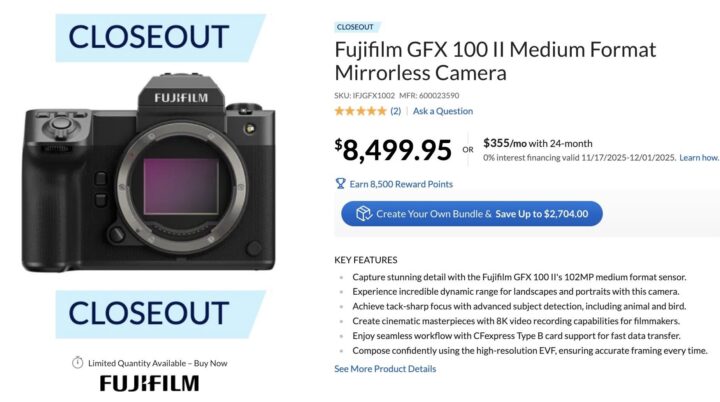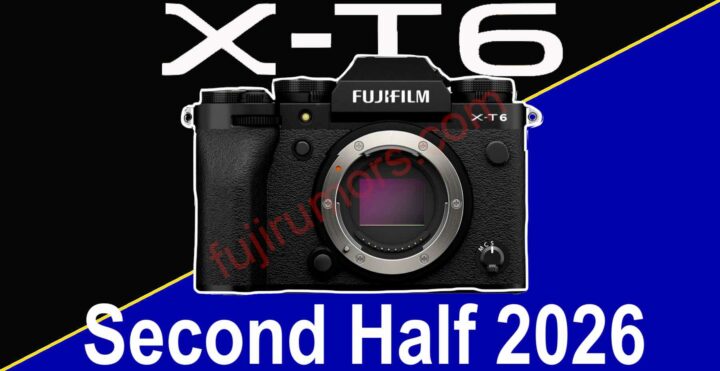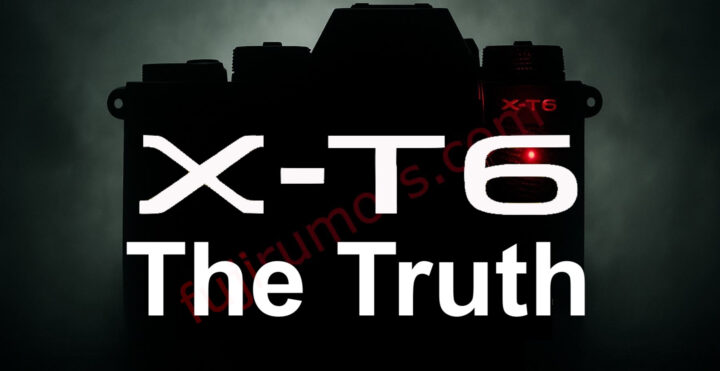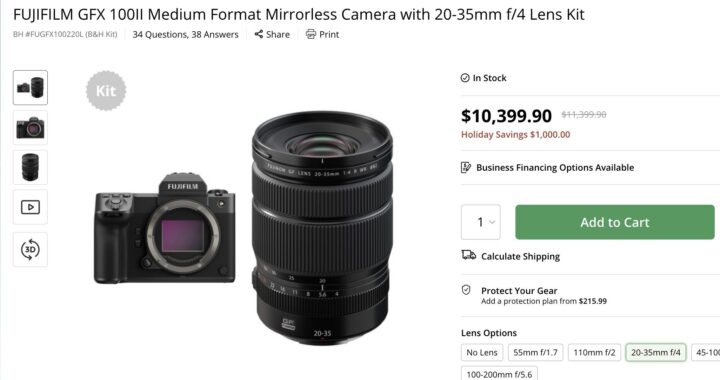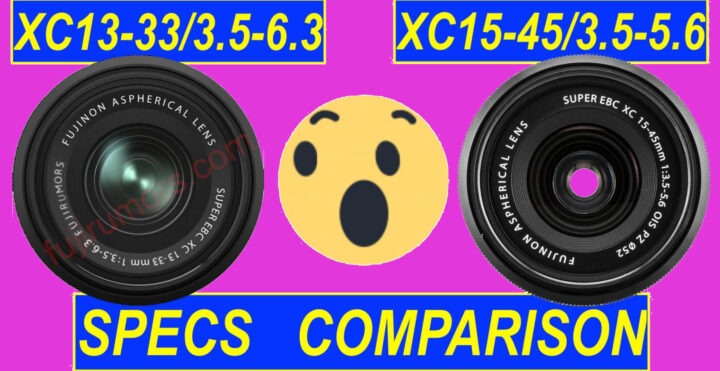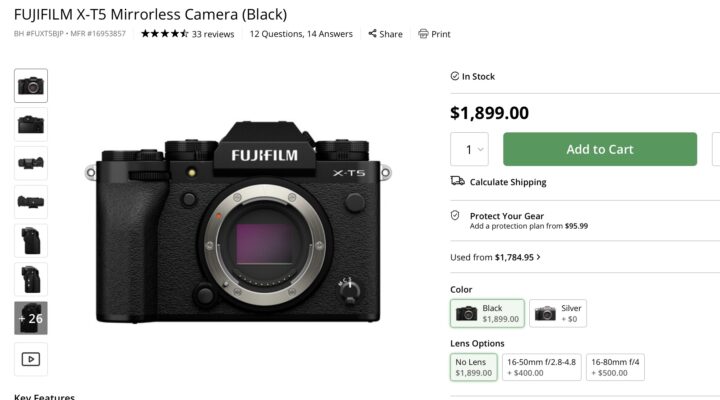Fujifilm GFX100 II in CLOSEOUT at Adorama and Massive $1,000+ GFX100II Bundle Price Drop at BHphoto – UPDATED
UPDATE: Adorama briefly marked the Fujifilm GFX100 II as a “closeout” product (see screenshot above), which prompted speculation about an upcoming replacement. We reported on it earlier today, noting how odd it seemed. Adorama has now corrected what was apparently an error, and the GFX100 II is no longer listed as closeout. The original article has been removed.
NOTE: the massive $1,000 rebate on the GFX100II bundle (+ freebies at BHphoto) is not a sell-out to make place in the warehouse for a replacement. The Fujifilm GFX100II is in full production and we know knothing about a replacement coming in the next few months.
There are great deals also Fujifilm X APS-C gear.
The Top Deal – save $1,000 + Free CFexpress Type B card and Camera Bag
- GFX100 II + GF 20-35mm f/4
- GFX100 II + GF 45-100mm f/4
- GFX100 II + GF 100-200mm f/5.6
- GFX100 II + GF 55mm f/1.7
- GFX100S II + GF 20-35mm f/4
- GFX100S II + GF 45-100mm f/4
- GFX100S II + GF 100-200mm f/5.6
- GFX100S II + GF 55mm f/1.7
- GFX100S II + GF110mm f/1.7
X Cameras

